If you explore Bangli deeper, you’ll be amazed by the regency’s many charms not listed in any guide book – Pura Taman Pecampuhan and Pura Dalem Balingkang for instance.
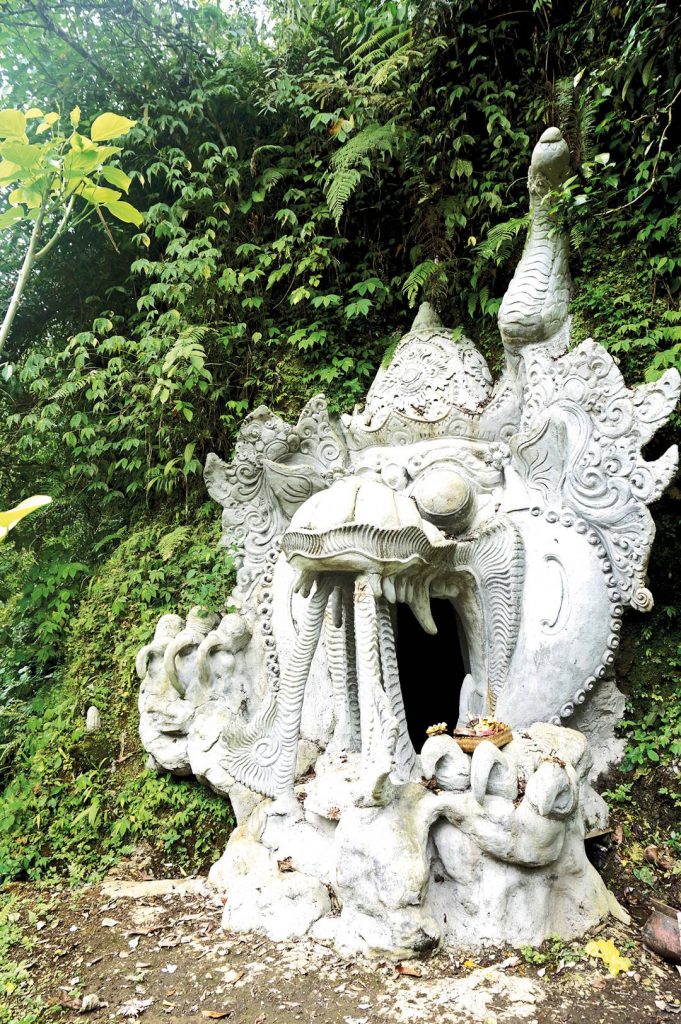
Bangli is best known for its Kintamani highlands, home to the majestic Lake Batur and Mount Batur. Both residents and visitors usually flock the area for the Batur sunrise trek, or simply enjoy the breathtaking bird’s eye view of the lake from the terraces of the restaurants on the area’s higher ground.
From a cultural visit of the traditional village of Penglipuran to an adventure to hidden waterfalls, and museum visits (yes, Bangli has museums) to a pilgrimage journey to Pura Kehen (one of the most important temples in Bali), Bangli has plenty to offer. And speaking of pilgrimage journeys, Bangli is also home to a number of melukat sites for cleansing rituals, such as Pura Taman Pecampuhan.
Indeed, when it comes to melukat, the pools at the popular Pura Tirta Empul will immediately spring to mind. Here, both the Balinese and non-Balinese come to lay their offerings, and bathe in the holy springs at the temple to cleanse themselves off of negative energy. On the other hand, Pura Taman Pecampuhan, a mystery to most visitors to Bali, if not all, is a holy site where so far, or at least at the time of writing this, only the local Balinese and the Balinese from other areas across the island come to visit.
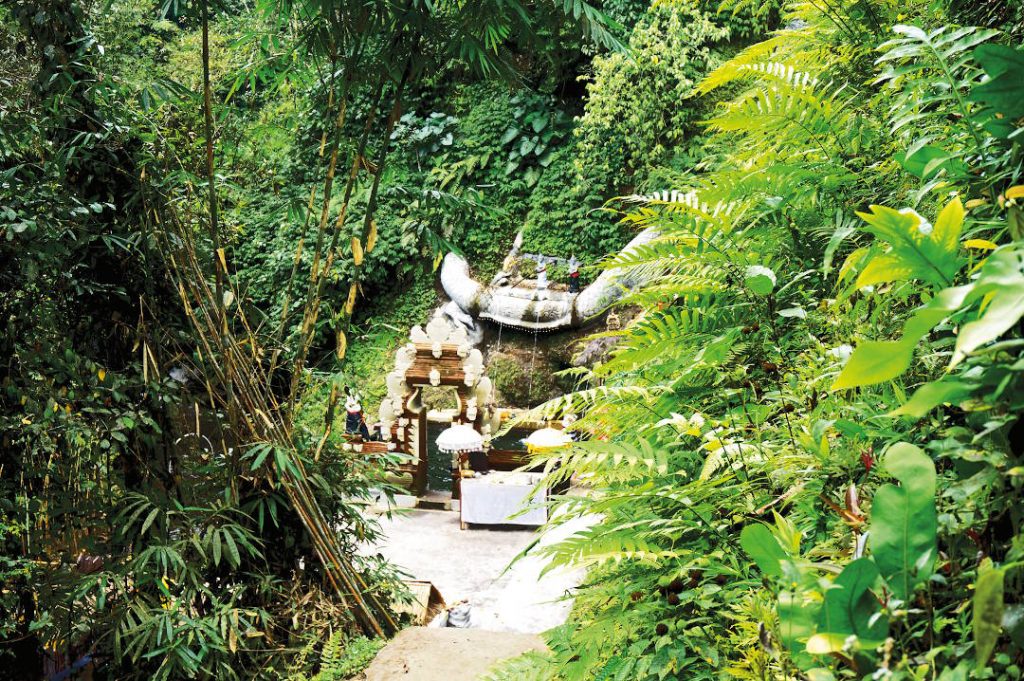
Pura Taman Pecampuhan, though not as big as Pura Tirta Empul, is a feast for the eyes, and the surrounding natural atmosphere is truly serene. Nestled on a river bank in Bangli’s Abuan village, the spring at the temple is considered holy, for it’s found at a confluence of two rivers or locally known as Campuhan; the stream from the river on the left is called Grojogan pesiraman Tan Hana and the one from the right Grojogan Pesiraman Dedari, with waterfalls found in each river.
In addition to the river and two small waterfalls used to cleanse, a well-decorated (in that typical Balinese style) man-made pool used as the cleansing area will entice just about anyone to jump in. There are nine fountains pouring out the tirta or holy water at Pura Taman Pecampuhan.
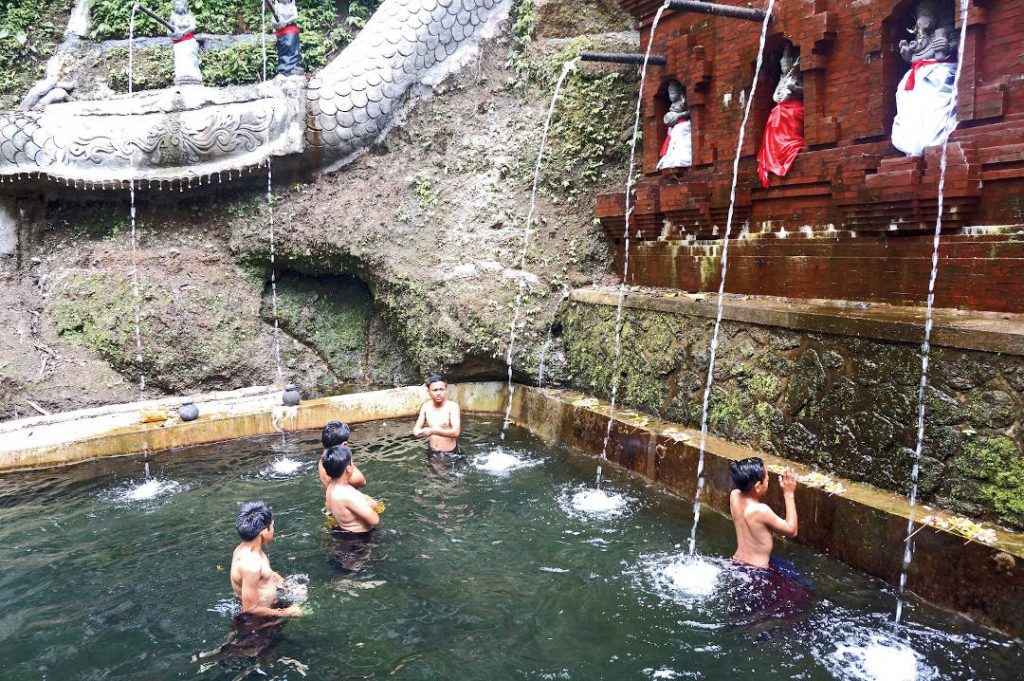
Arriving at the temple area, after passing the cemented steps down to the river, you will spot a big head of a dragon snake carved into the limestone hill, with its tail leading down to the pool area. The cooler climate will greet you as you go down the steps into the temple’s courtyard – you might just be the only visitor there. From the courtyard, you can gaze upon the greenery that surrounds the premises, taking in the natural beauty serenaded by the harmonious sounds of running water.
The regular visitors to Taman Pecampuhan are pilgrims who come for prayers in the temples and collect holy water from the temple’s holy springs. Half way down the temple is a small gutter with crystal clear water running through it, where the local villagers bathe.
Natural beauty and traditional Bali are beautiful highlights when on the way to Pura Taman Pecampuhan; it’s really worth it to make a stop. And though the temple hasn’t seen the likes of mainstream tourism, just about anyone is welcome here.
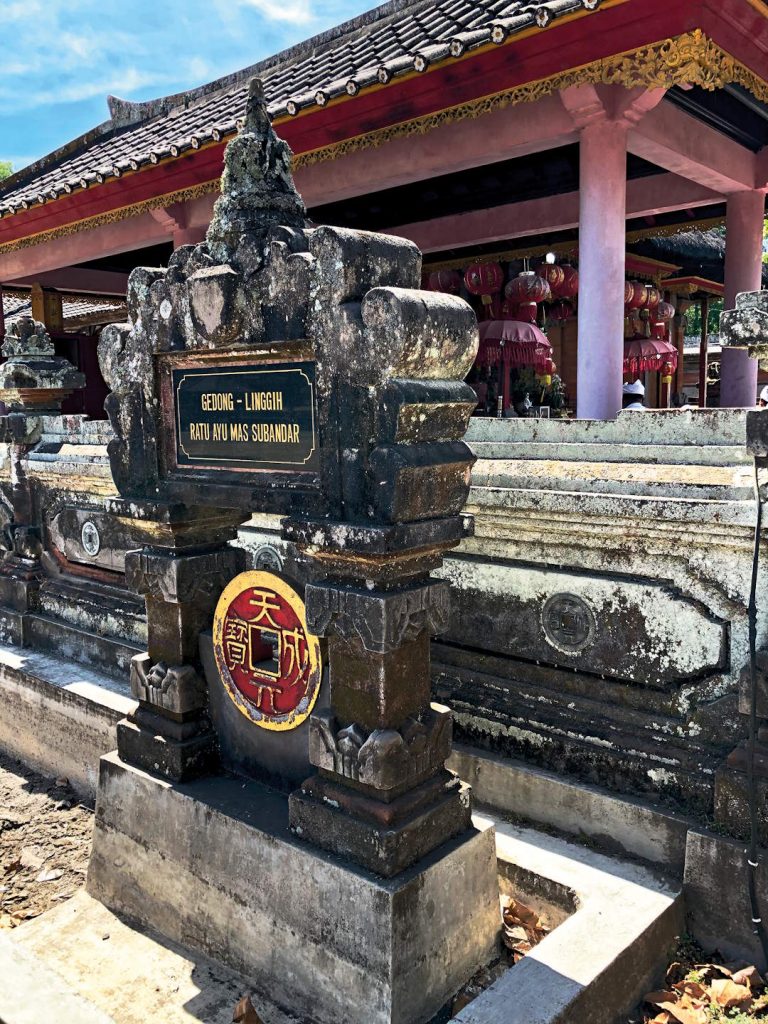
Moving on to Pinggan village, Pura Dalem Balingkang is a testament to the way Balinese Hinduism can coexist with Chinese Buddhism. These religions, especially the latter, influence the lives of the locals beyond the confines of the temples. That’s right, Bali has a long history with China, and it all started when the first people from mainland China arrived on the island’s shores early in 12th century.
A story is often told of the then king of Bali, Sri Jaya Pangus, a noble man who ruled in what was possibly the most exhilarating historic period of the Balinese kingdom. The king was already married to Dewi Mandul, a barren first lady, when he fell madly in love with Kang Ching Wie, the daughter of an influential Chinese merchant and ship captain. He defied traditional law by taking Kang Ching Wie of the Chinese Kang dynasty to be his second wife. Yet the disapproval of the high priest did not stop the king and the power of true love; the king went on and married the Chinese beauty without the blessing of the priest through a ceremony called Yadnya.
As it turned out, the unblessed marriage also received disapproval from God Shiva, who shortly after expelled the king from his palace in an area called Panarajon.
King Sri Jaya Pangus, accompanied by his two queens, descended the hills of Panarajon, tracing the forests to the northeast direction through heavy rain and wind storms. He tirelessly continued his journey down the hills, and finally arrived at a place called Gunung Lebih. There he rested and meditated, asking the gods for guidance and protection. His prayers was answered, and received the words of gods or known as pawisik, from which he received commands to continue his journey on the same direction until he reached the area where the rains and winds stopped.
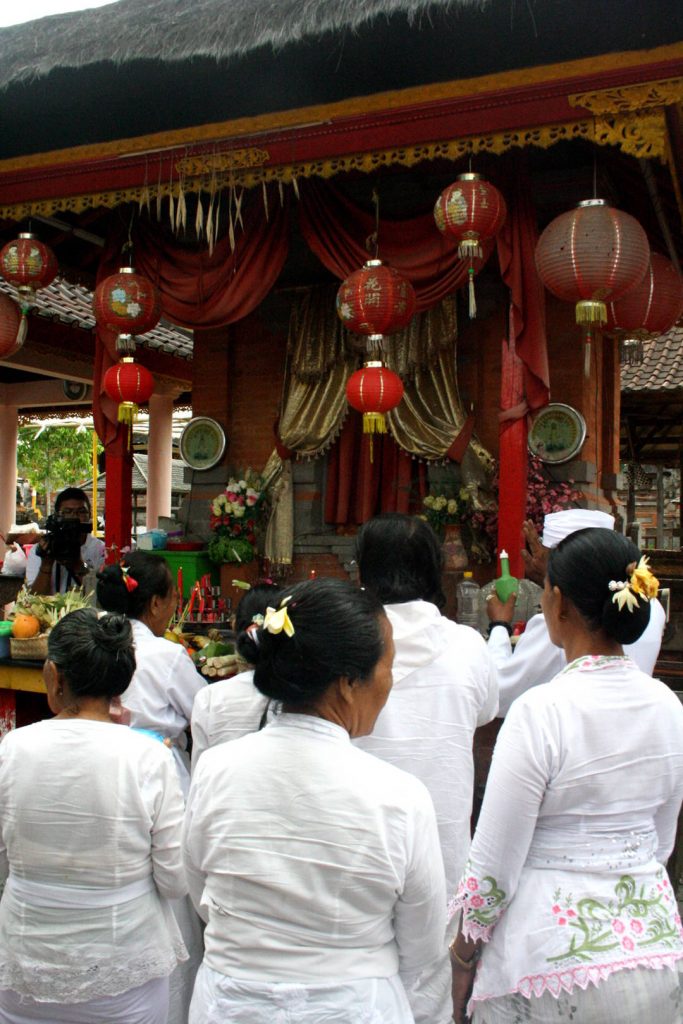
The area is known as Balingkang, derived from the words “Bali” and “Kang” dynasty, also a term used to refer to the Chinese origin of Kang Ching Wie. There he built his new palace and, in a relatively short time, soon gained strong followers and became one of Bali’s most respected kings. But the story didn’t end here.
The king and his two queens remained childless. Frustrated, the king set out on a pilgrimage to the nearby temple of Mount Batur in Kintamani. There he met the goddess of the lake, Dewi Danu, and a romance soon followed. The couple were blessed with a baby boy. The love affair was discovered, to the shock of both the two queens and Dewi Danu; a fierce fight ensued, but of course the powerful goddess prevailed, turning the king into a stone statue.
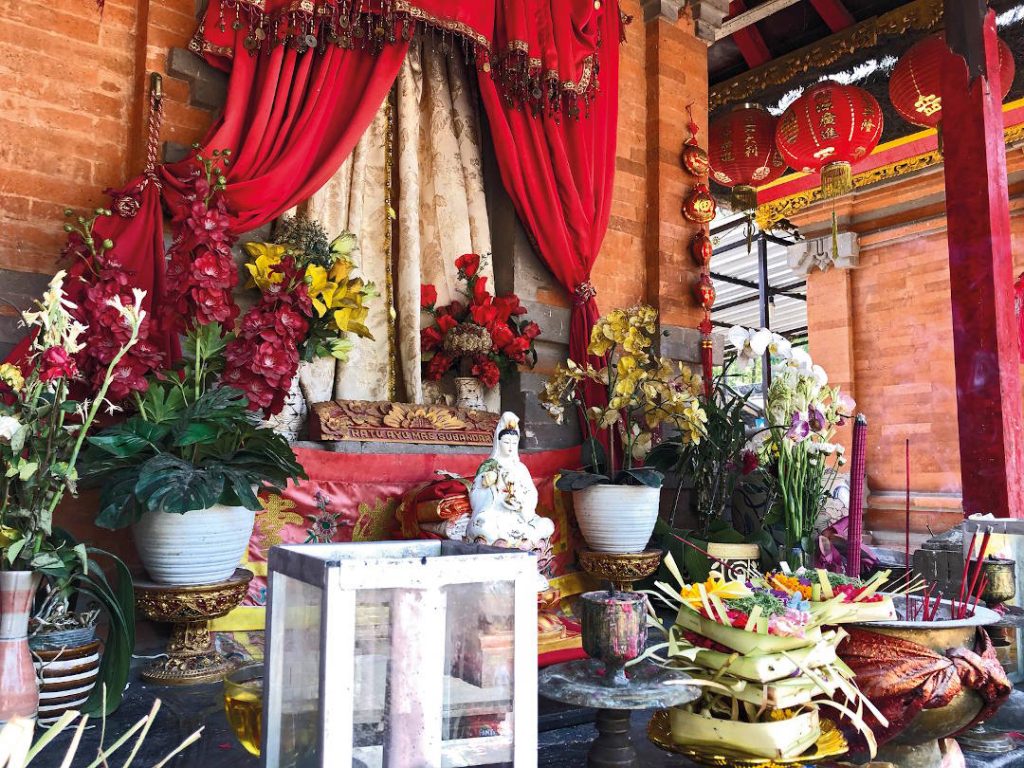
Today, the palace of King Sri Jaya Pangus is known as Pura Dalem Balingkang. To get to the temple from Banjar Paketan, follow down the scenic winding road that offers the views of Mount Batur, Mount Abang, and Mount Agung. The temple is surrounded by hills, and Melilit River which is the source of water for the local communities in the area.
The fort found on the outer part of the temple indicates that Pura Dalem Balingkang used to be a residence of a noble figure (palace of King Sri Jaya Pangus). Inside, Chinese influence is very obvious, with red ornaments dominating the area of Pura Dalem Balingkang, in addition to the Chinese structures that heavily influence the architecture of the temple. The temple’s shrine for Ratu Ayu Subandar especially is the most ‘Chinese’ one, with plenty of typical Chinese lanterns decorating the area of the shrine, and red drapes covering the doors and windows of the area of the shrine. Here you’ll also find a huge Chinese coin, making the shrine the most visited area in the temple, for it’s believed to bring luck.
Temple anniversary of Pura Dalem Balingkang falls this 12 November. Visitors and non Balinese Hindus are welcome to observe the festivity, given that they’re properly attired (sarong, sash, and no singlet). Women in their period are prohibited to enter the temple area.







